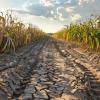
IIASA researchers are part of the ALFAwetlands project, which aims to map wetlands in the European Union and assess restoration measures to provide maximum benefits for climate and biodiversity. The project partners recently gathered for a Midterm Conference to review implementation progress, present and exchange current results, and discuss further plans.
The Alfawetlands project at IIASA is taking a step further from solely data collection and actively involves stakeholders in scientific processes. The project uses an approach of co-creation to find ways to integrate multiple targets, supporting more inclusive, community-based approaches to wetland restoration.
Juraj Balkovic, Senior Research Scholar in the Agriculture, Forestry, and Ecosystem Research Group of the IIASA Biodiversity and Natural Resources Program, leads the project’s scenario assessment work with a focus on analyzing the potential of European wetland restoration to help mitigate greenhouse gases (GHG) in the land use, land-use change, and forestry (LULUCF) sector. The project involves modeling GHG fluxes and other ecosystem services across EU wetlands, alongside land-use optimization modeling for future land use and climate change scenarios. Integration of these advanced modeling techniques allows the AFE Group to provide valuable insights and strategies to enhance environmental sustainability and climate adaptation across Europe.
From 21-24 May 2024, the project partners, which include experts from 14 European environmental NGOs, research institutes, and centers for higher learning across 10 EU countries, gathered at the Neusiedl See – Seewinkel National Park Visitor Center in Illmitz, Austria, for the ALFAwetlands Midterm Conference. The event focused on reviewing the progress of the ALFAwetlands project, sharing current results, and planning future activities. It also aimed to raise awareness about the importance of restoring wetlands by engaging with national and local stakeholders as well as members of the public.
The activities during the conference included field trips to Austrian and Hungarian sites to observe restoration projects and meet stakeholders. The conference also featured the ALFAwetlands Living Lab Open Day and a Photo Exhibition, highlighting the activities and biodiversity of the ALFAwetlands Living Labs and discussing citizen involvement in wetlands protection and restoration.
Further information:
News

05 March 2025
Co-creating a stakeholder-oriented climate risk service in Austria

25 February 2025
Master Programme "Global Demography" at the University of Vienna

14 February 2025
